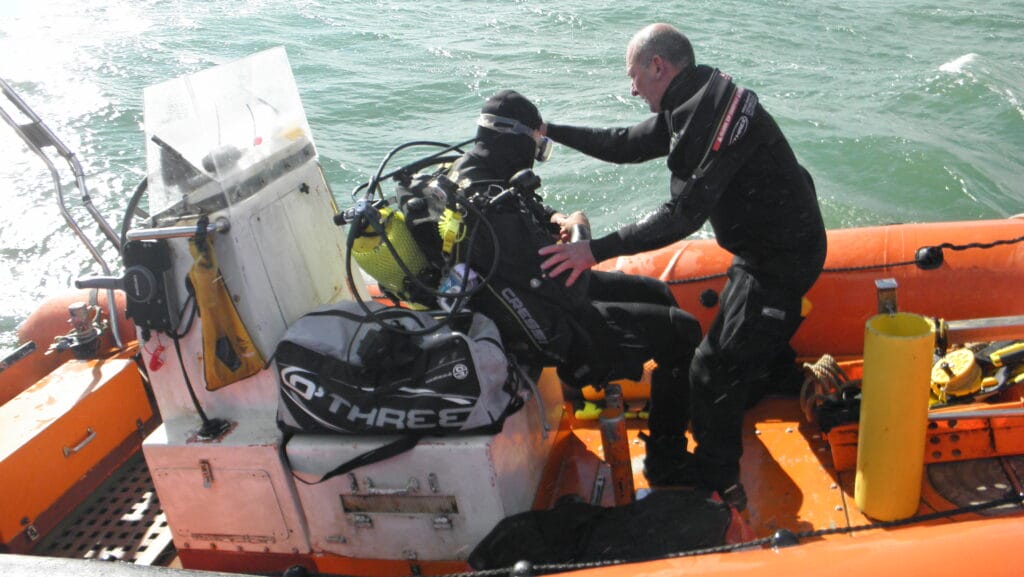
Cannon from the London shipwreck in the Thames emerges after 360 years

A bronze cannon from the 17th-century ship London has been uncovered in the Thames Estuary after spending 360 years buried under silt and clay. The discovery was made by licensed Historic England diver Steve Ellis, who has been exploring the wreck site for the past 14 years.
The London, built at Chatham Historic Dockyard in Kent between 1654 and 1656, was a pivotal ship in British naval history sinking in 1665 following a gunpowder explosion. The vessel played a crucial role in retrieving King Charles II from the Netherlands in 1660 and was one of only four English naval ships of its time equipped with a full complement of 76 bronze cannons. Records suggest that 41 have been recovered.
“It was so exciting to see the cannon emerge from the seabed after many years of diving the site. This discovery sheds new light on my theories about how the ship may have exploded and how it came to lie in two parts on the seabed,” says Steve Ellis, licensee of the London wreck.

Image courtesy of Steve Ellis
The newly discovered cannon from the shipwreck is believed to be a medium-sized demi-cannon cast by George Brown, measuring approximately 8’x6” and part of a set made for the London, located on the lower gun deck.
Duncan Wilson, chief executive of Historic England, says: “This amazing discovery will help us to better understand the types of cannons on board the London when it blew up in 1665. They weren’t all the same, as some were captured from enemy ships, so there is a complex story to unravel here. Our licensed divers play a huge part in investigating and monitoring our Protected Wrecks at sea, ensuring they are there for future generations to learn from and enjoy.”
In October 2008, the wreck was designated under the Protection of Wrecks Act (1973) and placed on Historic England’s Heritage at Risk Register alongside four other wrecks: Rooswijk, Northumberland, and Restoration. The London is located in two parts off Southend Pier in Essex and has been a challenging site for finds due to visibility typically below 0.5 metres, its highly tidal nature, and proximity to a busy shipping lane. Ellis believes that rare, ideal conditions made the discovery possible.

The London is situated in a busy shipping channel. Image courtesy of MSDS Marine
Mark Beattie-Edwards, chief executive of the Nautical Archaeology Society, has been advising Ellis since 2010. He explains: “For over a decade, we have suspected that some of the cannons on board the London were still on the seabed, and now Steve and his team have proved it. The discovery demonstrates just how culturally rich the wreck is, and with the site actively eroding, the potential for further similar finds remains ever present.”
As part of preservation efforts, the cannon has been included in Historic England’s forensic marking program. In collaboration with MSDS Marine and other partners, this initiative uses the latest underwater protective marking technology to deter theft and is a key component of Historic England’s broader ‘Heritage Watch’ programme.

Volunteer conservators wrapping and recording finds. Image courtesy of Mair/Chaos Photography
The importance of such measures was underscored in 2015 when diver Vincent Woolsgrove received a two-year prison sentence for failing to declare three cannons she had retrieved from the London and subsequently sold fraudulently. Trailed on several protected wreck sites across the UK in 2023, the forensic marking provides invisible markings that deter other potential criminals.
“Protective marking of this cannon will act as a clear deterrent to those looking to unlawfully lift and remove historic material from Protected Wreck Sites. The new markings will give police the ability to link the offender to the crime scene and implement criminal proceedings,” explains Mark Harrison, head of Heritage Crime at Historic England.
The post Cannon from the London shipwreck in the Thames emerges after 360 years appeared first on Marine Industry News.
